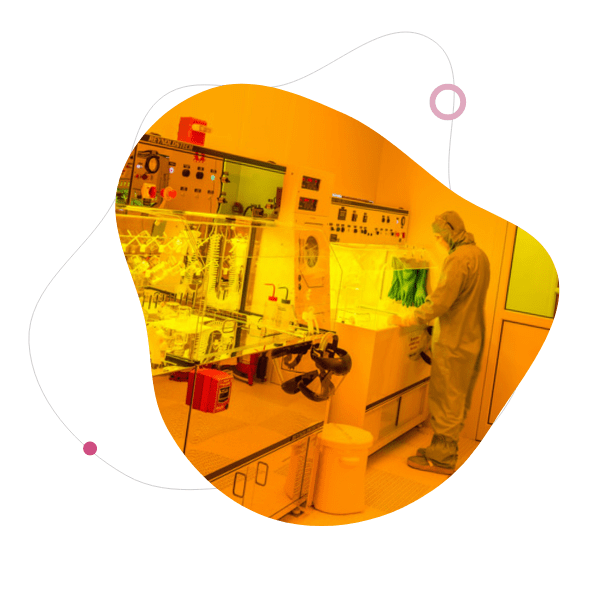The modern-day quest to build commercial quantum computers may depend on a Canadian collaboration.
Researchers at the University of British Columbia working with those at Sherbrooke University in Quebec are aiming to build a hybrid system that will combine a more stable type of quantum bit (or qubit) with superconducting chip technology to make commercial quantum computer manufacturing a reality.
“The only way that we’ll get real benefits out of quantum computing is if commercial quantum computers can eventually become reliable tools that anyone can access,” says Joe Salfi, the lead researcher for the project, based at the University of British Columbia.
He is combining his expertise in an area known as “spin-3/2” quantum bits or qubits, with the work led by Eva Dupont-Ferrier and Michel Pioro-Ladrière of Université de Sherbrooke, who are experts in superconducting circuits and spin-based quantum bits using industrial manufacturing technologies.
They are among the great minds being brought together in a recently-established Quantum Colaboratory (Quantum Colab) collaborative research and development environment that involves three universities — the University of Waterloo, Sherbrooke and the University of British Columbia.
The three academic institutions and industry partners are sharing facilities and expertise in order to bring quantum technologies to life. The academic researchers are from the Institute for Quantum Computing at Waterloo and its Transformative Quantum Technologies (TQT) technology vector research initiative; the Stewart Blusson Quantum Matter Institute at UBC and Institut quantique (IQ) of the Université de Sherbrooke.
Quantum computers are powerful because they can exploit the strange way that nature allows fundamental particles to be in a “superposition” of more than one state at a time. For example, a particle can be in a “spin up” and a “spin down” state at the same time.
So instead of computing like everyday “classical” computers do, using electrical signals that are translated into bits of zeros or ones, quantum computers process information in a much richer, deeper way, using nature’s power of superposition to form quantum bits or qubits that can be both zero and one at the same time.
There are already prototype quantum computers that can do very narrow and limited types of computations. But scaling them up to make them useful for bigger real-world problems, such as designing extremely complex new drugs or nanomaterials, is beset by two challenges. One challenge is that the qubits are extremely fragile. The superposition state falls apart easily, which ruins the quantum superpower of the qubits. The second problem involves being able to easily and cost-effectively manufacture circuits that can manage and control many qubits at the same time.
Salfi says this project, to build a hybrid technology that will use “spin-3/2” particles as qubits on superconducting circuits, will address those two challenges.
His own research has shown that spin-3/2 particles, which can be connected to each other to form circuits in a variety of ways, can have extremely long coherence times, something that was previously not thought to be possible with these particles. This means they remain in their superposition state for a longer time during the quantum computation.
Conventional spin-based qubits employ spin-1/2 electrons that are spin up and spin down. These particles are highly coherent, but, are more difficult to connect into circuits. A spin-3/2 particle employs both the real orbital angular momentum (motion) to the particle as well. This additional richness would, in principle, make the spin-3/2 qubits easier to control.
The challenge now is to show that this can be done, by connecting spin-3/2 qubits to each other and to superconducting circuits.
That is where the expertise of the researchers at Sherbrooke University’s Quantum Institute comes in.
“My expertise is with the spin-3/2 qubits, Salfi says. “At Sherbrooke, there is also work on spin qubits but they have much more advanced nanofabrication capabilities and expertise in making quantum transistors. They have been working for a very long time of the fabrication of those devices.”
Eva Dupont-Ferrier, a professor in the physics department at Sherbrooke University, explains that using superconducting circuits that allow electrons to move with no resistance has enormous benefits in quantum computing. However, putting spin-3/2 qubits together with the superconducting circuits is not easy. Spin-3/2 qubits require a magnetic field to operate, and that can degrade the quality of the superconducting circuits, she says.
“What we are doing in this project is developing superconducting circuits which are very resilient to magnetic fields, so that we can combine them with the spin-qubits,” Dupont-Ferrier says.
She describes collaboration as essential for a project like this one. It is especially important for Canada, which is small in terms of the number of institutions and researchers, so if they put their expertise together, they can do more, Dupont-Ferrier says. But also, the collaboration itself fosters fresh ideas, she adds.
“The more you exchange knowledge, the more ideas you can have and if people are coming together with different backgrounds, that’s even better,” Dupont-Ferrier says.
Salfi, likewise, says collaboration is important on a number of different levels. One reality is that the infrastructure, such as the specialized equipment, is costly. By combining access to facilities and expertise, institutions can achieve a great deal more together than is possible separately, he says,
Dupont-Ferrier adds that the exchange of information about how to do the measurements becomes important in this project, whether it is about getting the fabrication process right for the superconducting elements or optimizing the noise of the measurement chain.
Salfi agrees, “the collaboration at the level of measurements is important in being able to solve problems faster.”
But Salfi adds that what is most exciting about this project is that because the qubits would be operating on a silicon base, the same material that today’s computer chips are built upon, this research has the potential to lead to quantum computers that can be scaled up and are capable of being manufactured by industrial partners for commercial applications.
“It gives us the potential to utilize scalable manufacturing technology that already exists,” he says.
